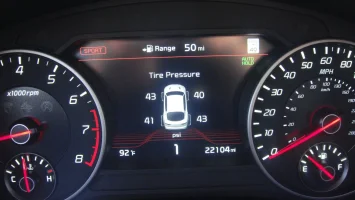Manaz
1000 Posts Club!
It is common practice for cars to be shipped around the world with very high tyre pressures - up to 55psi. The correct operating pressures for your Stinger are much lower - in the region of 36-40psi measured cold, depending on wheel and tyre size, loads, conditions, etc. Check your tyre placard and/or owners manual for details.
Unfortunately, it seems that some dealerships are not adjusting tyre pressures as part of their delivery service, and there have been *many* instances of owners driving around for days/weeks/months on tyres inflated to over 50psi. Not only is this potentially unsafe (over-inflated tyres can fail to achieve full grip levels) but it can also cost you money (as tyres wear inappropriately and too quickly), and can also cause a very uncomfortable ("jarring") ride which can have onward impacts such as causing a lot of rattling in the car.
If you have the factory TPMS system, you can check your tyre pressures via your dash (again, if you don't know how, you should read the owner's manual). If you don't have TPMS, at worst check the pressures at the local garage/workshop/gas station/service station/etc, and ideally, get yourself a good quality tyre pressure gauge (should cost < $100, and provides much more accurate readings than the ones normally found on forecourts.
Unfortunately, it seems that some dealerships are not adjusting tyre pressures as part of their delivery service, and there have been *many* instances of owners driving around for days/weeks/months on tyres inflated to over 50psi. Not only is this potentially unsafe (over-inflated tyres can fail to achieve full grip levels) but it can also cost you money (as tyres wear inappropriately and too quickly), and can also cause a very uncomfortable ("jarring") ride which can have onward impacts such as causing a lot of rattling in the car.
If you have the factory TPMS system, you can check your tyre pressures via your dash (again, if you don't know how, you should read the owner's manual). If you don't have TPMS, at worst check the pressures at the local garage/workshop/gas station/service station/etc, and ideally, get yourself a good quality tyre pressure gauge (should cost < $100, and provides much more accurate readings than the ones normally found on forecourts.






